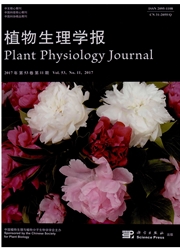

 中文摘要:
中文摘要:
有效的细胞间交流对单细胞生物和多细胞生物的生存至关重要。因为植物细胞被包裹在坚硬的细胞壁内,细胞质内容物的直接胞间交流只能通过胞间连丝,一种连接相邻细胞胞质的膜内衬纳米通道来实现。研究表明,这种膜内衬胞间通道在动物中有与之相似的通道纳米管。它们都能促进各种形式的大分子的交流,同时也使一些病原物利用这些通道从一个宿主细胞移动到另一个细胞。然而,宿主免疫监督系统也已经进化出了多种策略去防止病原物对其利用。最近的一些研究表明,胞间连丝在植物的先天免疫反应中扮演着重要角色,通过此种监督机制把胞间连丝与免疫信号转导通路融为一体。本文主要讨论胞间连丝在细胞间物质交流过程中的调控机制。
 英文摘要:
英文摘要:
Effective intercellular communication is critical for the survival of both unicellular and multicellular organisms. Because plant cells are encased in rigid cell walls, direct cell-to-cell exchange of cytoplasmic con- tent is only possible through plasmodesmata, membrane-lined nanotubes that connect the cytoplasm of adjacent cells. Studies have shown that such membrane-lined intercellular channels have some similar channels which called tunneling nanotubes in animals. They all facilitate the exchange of various forms of macromolecules, but at the same time make some microbial pathogens to exploit those channels to move from one host cell to anoth- er. However, host immune surveillance system may have also evolved strategies to offset such exploitation of them by the pathogen. Some recent discoveries suggest that cellular connectivity via plasmodesmata plays an important role in innate immune responses, and plants integrated plasmodesmata into immune signaling path- ways through the supervision mechanism. In this article, the regulation mechanism of plasmodesmata in inter- cellular communication were discussed.
 同期刊论文项目
同期刊论文项目
 同项目期刊论文
同项目期刊论文
 期刊信息
期刊信息
